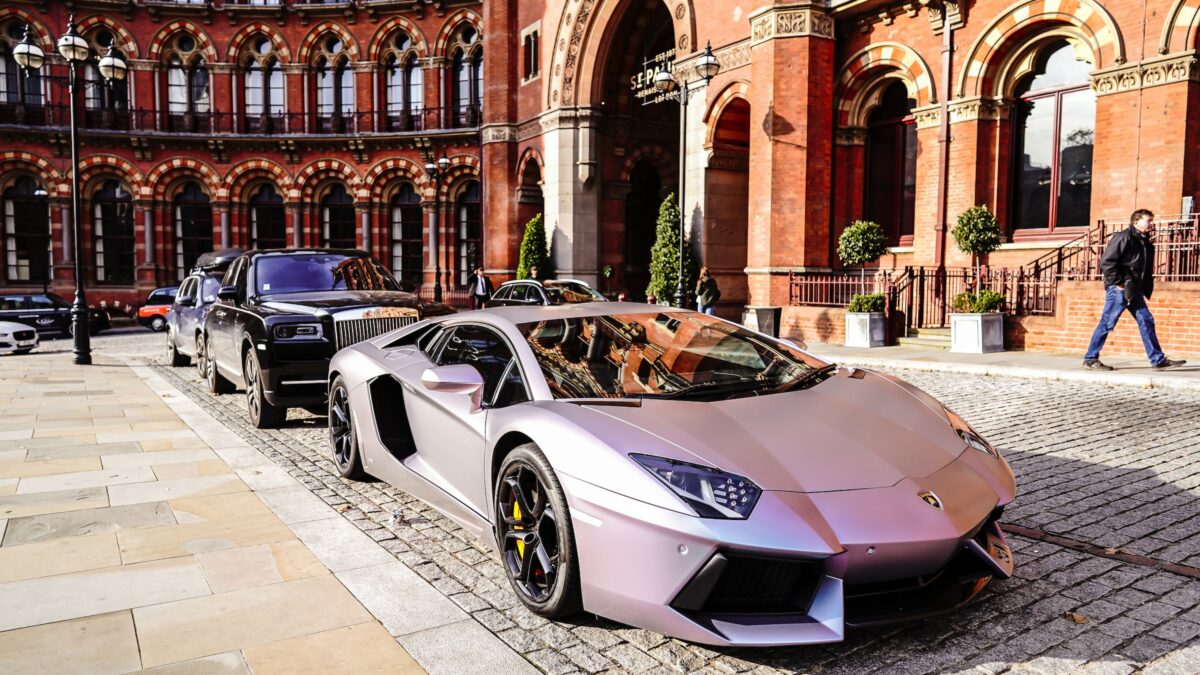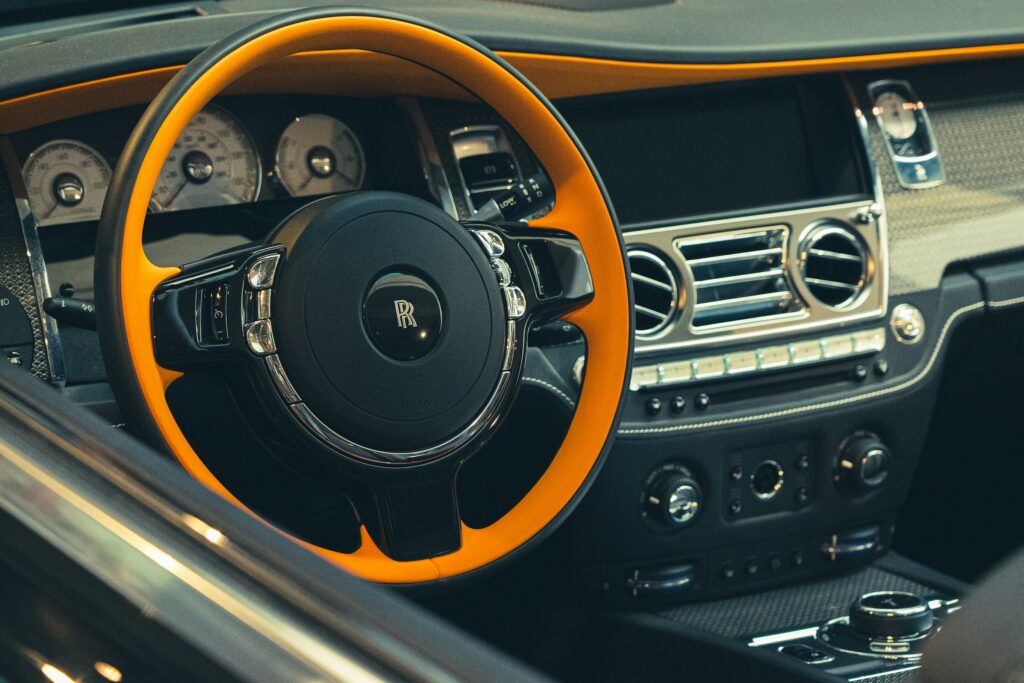
How To Develop Top-Notch Luxury Car Sales Marketing Strategies 🛞
In recent years, we’ve seen undeniable growth in the luxury car market. You might be a luxury car company executive or marketer looking to boost your business performance or simply an enthusiast curious about how these ultra-expensive products are marketed and sold. So, what are the best sales marketing strategies for a luxury car?
How much is the most expensive car in the world? c.$30M USD – for 1 car. It’s called a Rolls-Royce Boat Tail. There are only 3 in the world; and each one is highly customised. Actually, not one of these cars is the same; and the price ceiling is incredibly high with a lot of stretch in the upward price direction.
>Download Now: Free PDF How to Drive Pricing Strategy to Maximise EBIT Growth
This is not a one-off case, either. As the luxury car segment is booming, we are also seeing similar trends across ultra-luxury fashion, hotels, and jewelry too. The mass market, on the other hand, is stagnating. The ultra-wealthy is getting wealthier faster and there are more wealthy people than ever before. The middle classes are tightening their belts.
In terms of luxury car sales, for example, the demand for ultra-luxury cars has surpassed the mass market both in terms of growth and profitability. The ultra-wealthy want more ultra-luxury goods faster than luxury companies can make them.
All evidence is showing, then, that luxury is where the real pricing action is at the moment.
The problem is, though, incumbent luxury providers across segments are struggling to keep pace and are at risk of missing out on the huge price premiums to be found across most luxury segments.
In this article, we will continue to discuss the luxury car market, with a focus on ultra-luxury car sales and prices and how the ultra-wealthy are choosing to buy cars using a real case study based on the Rolls-Royce Boat Tail.
We argue that luxury car buyers are paying enormous price tags for their cars without a whimper; and that the current price tags albeit high have not hit the price ceiling in this segment yet. We believe all signs show that the ultra-elite is willing to pay even more for ultra-luxury cars over the next 10 years.
Luxury Car Sales Marketing Strategies: Prices Of The Most Most Expensive Cars In The World
The ultra-luxury car sales market starts at c.$1M and currently tops out at $30M.
| =< $2M | > $ 2M | > $5M |
|
|
|
The most expensive car currently is the Rolls-Royce Boat tails which sold earlier for – $28 – $30M.
The most expensive car ever sold is a 1962 Ferrari 250 GTO that sold at auction in Sotheby’s for $48.4M in 2018.
The most expensive car brand is Tesla with current valuations around c.$600 B and share prices dropping. But as you can see Tesla is by no means an ultra-luxury car on a price unit basis. It doesn’t even get on the list above. So really Tesla brand is actually low to mid-level luxury compared to these cars (above); and not prestigious enough for the ultra-wealthy elite.
To put all of this in perspective, then, the average middle-class Australian (midmarket) spends on average $61K on a sports car. The average ultra-wealthy elite spends on average c.$3M on a car, which is c.50X what the average Aussie spends.
Case Study On Car Sales Marketing And Pricing Strategies: How The Ultra Wealthy Are Buying Their Ultra Luxury Cars

In Italy earlier this year, Rolls-Royce revealed its second Boat Tail. This car was commissioned by a Rolls-Royce client who had worked closely with the company for four years to reach what they both believed was the final finished car.
The car shares its name and overall look with the first Boat Tail revealed in 2021. But the car is otherwise a total one-off – right down to the rose gold cutlery and carbon fibre folding stools designed for al fresco dining in the back of the car – designed and created as part of the Rolls-Royce special coachbuilding process.
Roll-Royce coachbuilding is a highly customised and customer-focused car design and development process.
The idea of coachbuilding was created by Rolls-Royce’s elite customers many years ago. These customers all want the same thing: a Rolls Royce that is truly theirs and that no one on the earth had or could have.
These elite Rolls-Royce customers are called by Rolls-Royce ‘luminaries’. There are around 100 worldwide and they know each other. They are a super elite club. The idea of this exclusive club was again something these customers created between them.
Not everyone with lots of money can be a member of the luminaries club or access Rolls-Royce’s coachbuilding service.
In fact, no amount of money will help you jump the queue to the Rolls Royce coachbuilding. Having lots of money is something plenty of people have and there are only a rare few Rolls-Royce luxury vehicles. So Rolls Royce makes sure it manages its customers with a strict number limit and selection criteria.
In fact, there is a waiting list for the Rolls Royce coachbuilding service. And even though Rolls-Royce could sell lots of coach-built projects, they intentionally don’t do this and cap the numbers. Rolls Royce is already booked for many, many years to come with coachbuilt projects. Customers apply for the service and wait a long time for their names to be called on the last.
Many customers come with their own ideas of what they want to do and how it should look.
However, to get accepted into the club, Rolls Royce made it a requirement for all clients to visit Rolls-Royce HQ in Goodwood, England at least six or seven times during the project. It has to be the owner that works with the business, not an executive assistant or their chauffeur. Rolls Royce demands full commitment from their clients to get a coach-built Rolls Royce.
The coachbuilding service has certain parameters regarding engineering and legislation.
Coachbuilding, for example, is a four-year journey, and from time to time it might also be a complicated journey if the designs and requirements are more complex.
Another requirement from Rolls Royce, then (that follows from the last) is for a client to understand technical details. Including what’s possible and what isn’t. Someone who understands that certain details can change through the engineering process. In other words, clients must be car aficionados well versed in the engineering and legal aspects of car manufacturing.
At the end of the 4-year coachbuilding process, the client receives their truly unique car. What’s more, for Boat Tail buyers (and customers of future coach-built projects), the elite are written into the history of Rolls-Royce and entered into the Rolls Royce company archives. A tribute that the elite club highly values – largely because it’s something that money can’t buy.
Discussion: Supply And Demand Influencing High Price Luxury Car Sales Marketing And Pricing Strategies
The $1M + price segment is the highest price band price segment whose price ceiling is ever increasing with the maximum historical price reaching $48 M for a single price unit. This ultra-luxury price band has the most and fastest growth rate of all luxury price bands with a compound annual growth rate of 8 to 14 per cent predicted for the next 10 years.
Growth rates are likely to remain strong as demand is high and supply is tightly controlled by suppliers. Most of the cars in the list above, for example, are relatively rare with production volumes < 1,000 a year. Ultra premium cars are even rarer with <100 being produced every 5 years. Overall, demand, pricing and supply management in the industry shows strong growth and profitability over the next 10 years.
Increasing Competition
Competition among car manufacturers (incumbent and new entrants) has, however, increased in the last two years. For example, there have been more than ten new entrants that have entered the market and many more new luxury brands planning to enter this ultra-elite car market. The number of new product launches has also increased over the past 2 years. So although there are new entrants, demand in the segment is picking up and customers are craving more technological add-ons. Especially when it comes to powertrain functions, digital interactions, connectivity, and ADAS features.
New entrants and incumbents are global – with luxury car companies operating and/or selling cars in China, Europe, Japan, the United States, and Australia.
The level of competitive intensity is predicted to grow significantly over the next 10 years as more companies seek to capture monumentally huge $ profits on a price unit basis. However, the growth of new entrants is slight compared to the growth of the segment. Thus, it is unlikely competition in this segment would impact premium pricing. It may in fact create higher prices through rapid L& D integrations and technological advancements.
Business Model Challenges To Luxury Car Sales Marketing And Pricing Strategies
There has been a marked movement to electric batteries and high-tech engineers in the >$1M price band as customers seek to make more sustainable and environmental choices as they buy a car. Looking at the list above, for example, around 70 per cent of these ultra-luxury cars are either fully or partially electrified with luxury internal combustion engines.
The ultra-wealthy appear to be moving away from petrol to battery electric and are increasingly more committed to sustainability. This in turn means incumbents will have to upgrade legacy engineering and operational issues and divest in older assets that are not ‘sustainable’.
New entrants in the luxury car market also appear to be agile and savvy in terms of how they sell their cars to customers.
For example, most new entrants are sporting an ecosystem model that split distribution activities into specific tasks such as vehicle configuration, test drives, sales, and delivery and assigns different partners for each task.
Incumbents are also doing this too, however, they have a long journey of divestment and legacy operations to untangle first. It appears the race is on for luxury companies to avoid the cost of owning and operating end-to-end operations and distributions without giving away control of the entire distribution system and customer experience.
Changing Customer Needs Impacting Luxury Car Sales Marketing And Pricing Strategies
Finally, the needs and wants of the ultra-wealthy elite are evolving quickly as the mix and number of ultra-wealthy people are changing too. For example, the ultra-wealthy are no longer content with just an ultra-luxury car; they want it all – a car no one else has and an experience that makes them feel on top of the world.
In fact, the ultra-wealthy demand a seamless and highly personalised customer experience first before they part with their cash. What’s more, they want the customer experience to last forever – from the moment they decide to buy and onwards.
As the Rolls Royce case study shows, the sales experience alone can last 4 years and the customers still want to be added to an exclusive ultra-wealth club to continue to enjoy their car and feelings of grandeur.
Implications Of High Price Luxury Car Sales Marketing And Pricing Strategies
The rate of change in this segment coupled with legacy business model challenges and present huge pricing potential for both incumbents and new entrants in the market. But also, somewhat of an operational issue for existing incumbents with legacy CAPEX obligations and ties.
The definition of a luxury car is changing; including the mix of customer profiles that make up this segment, their location; and the accelerated growth of ultra-wealthy people in the world.
Luxury car sales are now global and traditional value drivers are evolving and highly specific and variable at a customer and product level. Traditional elements such as craftsmanship and quality remain powerful buying factors, but are a given / baseline for this new generation of ultra wealthy.
Ultra-wealthy car buyers want it all – all the value styling, performance, and driving “feel; and see this as the base standard. They also want all the bells and whistles too, including a fully connected technology ecosystem. The good news, they are likely willing to pay a lot more than current price ceiling.
〉〉〉 Get Your FREE Pricing Audit 〉〉〉
Bottomline
Luxury companies that can meet this demand head-on will capture the greatest price premiums from this segment – as there’s no shortage of cash here and no problems with spending. However, the insatiable needs and demand for luxury from the ultra-wealthy may not always be possible to satisfy. Thus like Rolls Royce, luxury firms will need air-tight price and micro-segmentation and structures with well-thought-through value-based buying experiences and sales parameters in order to establish boundaries and protect companies and customers from destroying value.
For a comprehensive view on maximising growth in your company,
Download a complimentary whitepaper on How To Drive Pricing Strategy To Maximise EBIT Growth.
Are you a business in need of help to align your pricing strategy, people and operations to deliver an immediate impact on profit?
If so, please call (+61) 2 9000 1115.
You can also email us at team@taylorwells.com.au if you have any further questions.
Make your pricing world-class!
Related Posts
Leave a Reply Cancel reply
Categories
- marketing strategy (26)
- Organisational Design (14)
- Podcast (114)
- Pricing Capability (87)
- Pricing Career Advice (10)
- Pricing Recruitment (19)
- Pricing Strategy (289)
- Pricing Team Skills (13)
- Pricing Teams & Culture (24)
- Pricing Transformation (47)
- Revenue Model (25)
- Sales Effectiveness (27)
- Talent Management (7)
- Technical Pricing Skills (35)






